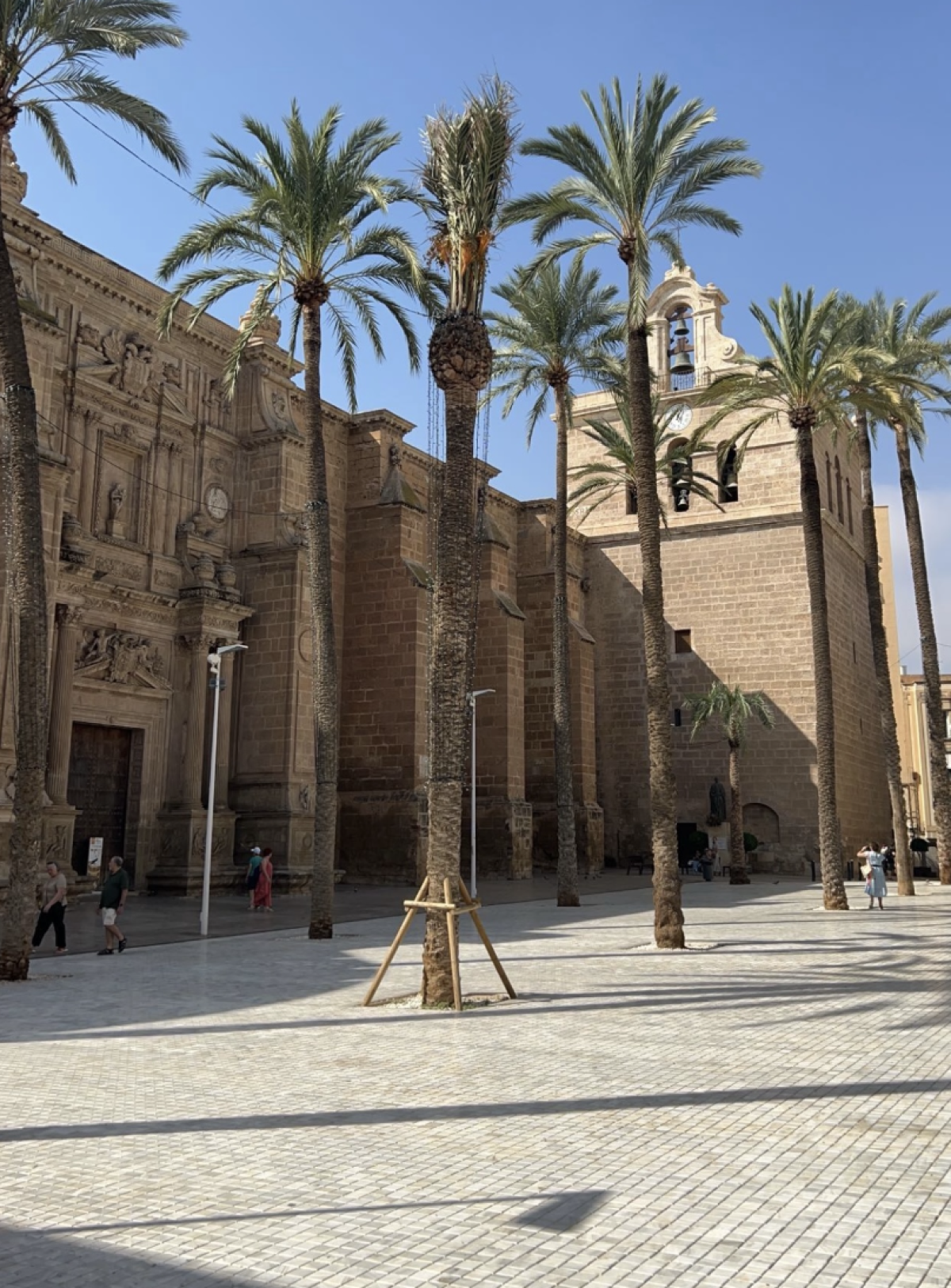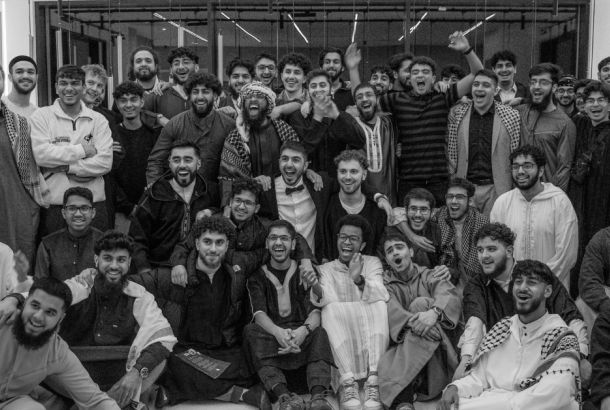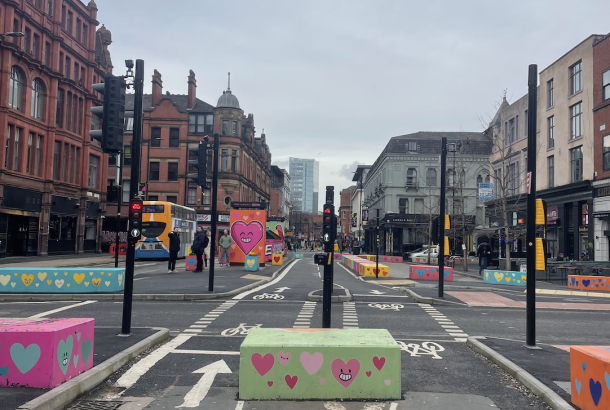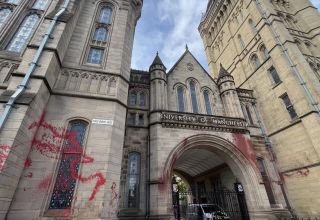From Our Correspondent: Almería, ‘The Indalo Man’, and the fight to preserve Spanish cultural heritage

Found within the endless bundles of colourful necklaces at weekend markets and in the entrances of each and every souvenir shop, museum doorway, and street graffiti – ‘The Indalo Man’ decorates the streets of Almería, Andalusia.
Spain has an undeniably strong cultural identity. Though typically recognised through the clicks of the castanets and the frills and folds of Flamenco, my year abroad has brought me to an acknowledgement of a deeper sense of spirituality that serves to unify Spanish people within ‘las comunidades autónomas’ (similar to counties in England).
When broadly considering Spanish art and its contribution to the country’s identity, most would readily point to the bizarre, dream-like paintings of Salvador Dali or the revolutionary and equally intriguing sketches by Picasso in the 20th century. Queues of hundreds to thousands of people fill the square outside the museum of La Reina Sofía in Central Madrid every week to see the infamous painting of ‘La Guernica’ – due to its extremely abstract, emotional illustration of the interwar years. Without discrediting the importance of these renowned artists, my year abroad has taught me to appreciate the immense cultural relevance of lesser-known Neolithic art in contemporary southern Spain – which has become central in debates surrounding the fight to preserve Spanish cultural heritage.
The Indalo stick-figure drawing is believed to represent the ghost of an anonymous man holding a rainbow above his head with outstretched arms. Countless analysts have debated the significance of the arch and the man’s identity; despite there being no concrete conclusion to either, El Indalo is nationally recognised as a symbol of good fortune and protection for the people of the city.
Some locals believe it must be gifted from one person to another to unlock its divine potential and serve its true purpose. It is considered a peace offering between friends and family and stands as a sentimental symbol of the community, bearing a value similar to that of the Irish four-leaf clover. The students at my University carry ‘El Indalo’ as pencil case charms or earring pendants and have told me that the symbol has occasionally been painted above doorways to protect households from evil and to invite positivity instead.

‘El Indalo’ was discovered in a cave in Sierra Maria-Los Velez Natural Park by an archaeologist in 1868 who confirmed that the cave drawings had been hidden for thousands of years, remaining remarkably well-preserved. Believed to be a product of Neolithic spirituality, the drawing was named ‘The Messenger of the Gods’, taking its origins from the Iberian language. This discovery provided an insight into the beliefs and customs of ancient ancestors and demonstrated the beginning of human creativity and artistic expression within Spain.
As a history student, something that has always fascinated me is the significance of art and expression to humanity since the very beginning and the natural spirituality that has often accompanied these creations. Many regions of Spain remain traditional and religious, with a prevalent Catholic background, and we continue to see the appearance of artistic monuments and sculptures as a reflection of Spanish spirituality throughout the country. It appears there has always been a secure desire to live with and give thanks to an omniscient being, manifesting through endless means – behavioural and artistic. It is incredible to think that for Neolithic communities, this curiosity and desire to show dedication to a higher power existed – and the art was there to show gratitude in the exact same way.
A friend at the University of Almería told me that the ancient origins of this design were only recently resurrected and embedded into Spanish culture during the 20th century and was essentially the emblem for a rebirth of Andalusia. She told me that ‘El Movimiento Indaliano’, or ‘The Indalo Movement’ was created by a man named Jesús de Perceval who wanted to protect and re-establish the cultural heritage of Almería. Considering its context within both World Wars, the Civil War, and the dominance of Francoism, Almerían artists wanted to project images of a ‘Happy Spain’ bathing in its own traditional values and national features. It was created as a reminder of a pre-war country to motivate the Andalusian community, in particular young artists and those grieving the loss of family members.
The movement was dubbed ‘El Indalo’, becoming the official stamp of protest and optimism. Almería was the last city in Spain to end conflict during the Civil War, as the local residents did not believe that the war had truly ended and remained in a strict state of authoritarian control. This left the south coast particularly damaged by national conflict, further complicated by the politics of the Second World War. From cave to canvas, The mysterious Indalo Man has provided both Stone Age and modern Almería with a sense of peace, direction, pride and optimism. Both art galleries here in the city centre have a separate, permanent section dedicated to the impact of the movement – preserving Andalusian pride similarly to the cave walls.
The importance of this cultural preservation has emerged through the recent modernisation of Almería. In a very honest conversation about local politics with my friend Nerea, she explained that the 21st century has witnessed a major prioritisation of commercialism over culture, which has caused a lot of upset for residents. She told me that National Geographic came to Almería to film a documentary about small, abandoned, beautifully historical houses discovered between the deserts and mountains of northern Almería. Unfortunately, the houses were rapidly torn down and flattened to build a brand new, top-of-the-range, entirely stocked, freshly painted and modern IKEA.
It is no surprise that national modernisation comes at the cost of historical sacrifice, but many national treasures are being traded for the satisfaction of big company names. Again to the dismay of the Andalusian public, another heritage sight, The Malaga Palace, was very recently converted into an exceptionally fancy bed and breakfast with en-suite rooms, charging roughly £150 per night. Despite the protests of residents in the city, the local authorities pushed forward with plans to modernise and eradicate.
UNESCO has recently declared the Neolithic artwork of El Indalo a World Heritage Site, giving international recognition to the people of Almería. The Indalo art is now categorised as a national artefact and collaborates with other ancient carvings to educate people about very early settlements in Spain. Together with the 40,000-year-old Castillo Cave handprints, the Indalo adds to the timeline of human existence and behaviour. It holds great historical relevance and sentimental value, representing man’s ethereal connection with the universe for some and strengthening early friendships with a tie of protection for others.
Whilst I have no spiritual or religious beliefs myself. My placement has given me the opportunity to learn about a different culture and witness unique traditions firsthand. One of the greatest benefits of a year abroad is to move beyond the two-week holiday excursion and sink into more nuanced cultural aspects, giving you time to truly appreciate and learn. El Indalo is so prominent to a small community, where a lot of the cultural background has unfortunately been lost due to modernisation or national conflict. Carved by a Neolithic individual, perhaps in a time of private worship almost 3000 years ago, it is remarkable to think that something – that could have so easily been missed or forgotten – has survived and transcended the divisions of both conflict and time to create a new sense of solidarity for 200,000 people in the sunny province of Almería.







